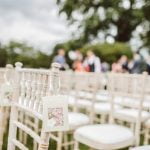Are you wondering “how much are wedding dress alterations“? Understanding the need for wedding dress alterations is essential for anyone preparing for their big day. Whether it’s for a perfect fit, to update the style, or to enhance the overall look, alterations play a crucial role in making the wedding dress truly yours.
Factors such as fabric type, complexity of alterations, and location can significantly impact the cost of wedding dress alterations. In this article, we will delve into the various factors that affect the cost of alterations and provide insight into the average cost of wedding dress alterations.
In addition to understanding the need and cost of wedding dress alterations, we will also explore different types of alterations, tips for finding affordable alteration services, pros and cons of DIY alterations, common mistakes to avoid, and how to locate a reputable and skilled seamstress. This comprehensive guide will help you navigate through the process of wedding dress alterations with ease and confidence.
Factors That Affect the Cost of Wedding Dress Alterations
When it comes to wedding dress alterations, the cost can vary widely depending on a number of factors. Understanding what influences the price of alterations can help you budget appropriately and find the best option for your needs.
Complexity of Alterations
One of the primary factors that affect the cost of wedding dress alterations is the complexity of the work needed. Simple alterations such as hemming or taking in the sides will generally cost less than more complex alterations such as reshaping the neckline or adding embellishments. The more intricate and time-consuming the alteration, the higher the cost is likely to be.
Fabric and Detailing
The type of fabric and detailing on your wedding dress can also impact the cost of alterations. Delicate fabrics like lace or chiffon may require more skill and time to work with, leading to higher alteration costs. Additionally, dresses with intricate beading, embroidery, or other detailing may require extra care and attention during alterations, which can also add to the overall price.
Location and Seamstress Experience
The location where you have your wedding dress alterations done can also influence the cost. In areas with a higher cost of living, such as major cities, you can expect to pay more for alterations. Additionally, seamstress experience and reputation play a role in pricing. A highly skilled and reputable seamstress may charge more for their services compared to someone with less experience.
Understanding these factors will help you better estimate how much wedding dress alterations could potentially cost you. Keep in mind that receiving quotes from several different seamstresses can help you find a competitive price for quality alterations that won’t break your budget.
Average Cost of Wedding Dress Alterations
When it comes to wedding dress alterations, one of the most pressing questions on a bride’s mind is, “How much are wedding dress alterations?” The average cost of wedding dress alterations can vary depending on a few key factors. These factors include the complexity of the alterations needed, the materials and embellishments on the dress, and the expertise of the seamstress or tailor performing the alterations.
On average, brides can expect to pay anywhere from $200 to $600 for their wedding dress alterations. However, this cost can increase if extensive changes or customizations are required.
Simple alterations such as hemming, taking in or letting out seams, and adding bustles tend to be on the lower end of the price range. More intricate alterations such as reshaping the gown’s silhouette, adjusting beading or lace details, or altering sleeves can push the cost towards the higher end of the spectrum.
It’s important for brides to budget for these costs when purchasing their wedding gown. Understanding how much are wedding dress alterations going to cost allows brides to factor it into their overall wedding expenses and avoid any unexpected financial surprises later on. By being aware of the average cost of wedding dress alterations, brides can also make informed decisions when choosing a seamstress or tailor for their alteration needs.
Different Types of Wedding Dress Alterations
When it comes to wedding dress alterations, there are several different types that a bride may need to consider. Here are some of the most common types of wedding dress alterations:
- Hemming: This is one of the most basic and common types of wedding dress alterations. It involves altering the length of the dress to ensure that it is the perfect fit for the bride’s height.
- Taking in or letting out: Depending on changes in weight or body shape, a bride may need to have her dress taken in or let out for a better fit.
- Adding or removing sleeves: Some brides may want to add sleeves to their dress for more coverage, while others may want existing sleeves removed for a sleeveless look.
- Bustle: Many wedding dresses come with a train, which can be secured with a bustle for easier movement after the ceremony.
It is important for brides to understand these different types of alterations so they can communicate clearly with their seamstress about their specific needs. Each type of alteration comes with its own considerations and potential costs.
In addition, brides should also consider any additional customizations they may want for their dress, such as adding lace or beading, which can also affect the overall cost of alterations. Understanding these different types of alterations will help brides make informed decisions when it comes to preparing their dream wedding gown.
Ultimately, discussing these options with a skilled seamstress will provide insight into how much are wedding dress alterations and what specific adjustments will be needed to achieve the perfect fit for the bride’s special day.
Tips for Finding Affordable Wedding Dress Alteration Services
When it comes to wedding dress alterations, finding affordable services is often a priority for many brides-to-be. While the cost of alterations can vary depending on several factors, there are some tips and strategies you can use to find affordable wedding dress alteration services without compromising on quality.
Shop Around for Quotes
One of the best ways to ensure you’re getting a good deal on wedding dress alterations is to shop around and get quotes from multiple seamstresses or tailors. Don’t be afraid to ask for estimates from several different providers so that you can compare prices and services. Keep in mind that the cheapest option isn’t always the best, so be sure to consider the reputation and experience of each professional as well.
Consider Local Options
Opting for a local seamstress or tailor can often be more affordable than going with a big-name bridal boutique or chain. Local professionals may have lower overhead costs, allowing them to offer competitive pricing for their alteration services. Additionally, supporting local businesses can be a great way to contribute to your community while saving money on your wedding dress alterations.
Ask About Package Deals
Some bridal shops and alteration services may offer package deals for brides who need multiple alterations or adjustments to their wedding dress. Inquiring about bundle pricing or special offers can help you save money in the long run, especially if you require extensive modifications to your gown. Be sure to communicate your needs clearly so that the provider can give you an accurate quote for their services.
By following these tips, you can effectively find affordable wedding dress alteration services without sacrificing quality or craftsmanship. Remember that it’s essential to prioritize both cost and skill when choosing a professional for your wedding dress alterations.
DIY Wedding Dress Alterations
When it comes to wedding dress alterations, many brides consider the option of doing it themselves. While DIY wedding dress alterations may seem like a cost-effective and convenient choice, there are both pros and cons to take into consideration.
One of the main advantages of DIY wedding dress alterations is the potential cost savings. Professional alteration services can be quite expensive, and by doing it yourself, you can significantly cut down on costs. Additionally, some brides enjoy the creative process of altering their own dress, adding a personal touch to their wedding attire.
However, there are also disadvantages to DIY wedding dress alterations. Without the expertise and experience of a professional seamstress, there’s a risk of damaging the dress irreparably. Wedding dresses are often intricate and delicate garments, requiring specialized knowledge to alter properly. Furthermore, the time and effort required for DIY alterations should not be underestimated, especially with the added stress of wedding planning.
Ultimately, whether or not to pursue DIY wedding dress alterations depends on each bride’s comfort level with sewing and willingness to take on the task. It’s important to carefully weigh the pros and cons before making a decision on how to proceed with altering your wedding dress.
| Pros | Cons |
|---|---|
| Potential cost savings | Risk of damaging the dress |
| Creative process | Time and effort required |
Common Mistakes to Avoid When Getting Wedding Dress Alterations
When it comes to getting wedding dress alterations, there are several common mistakes that brides-to-be should be aware of in order to ensure a seamless and stress-free process. Avoiding these pitfalls can help make the experience of altering your wedding dress much more enjoyable and successful. Here are some common mistakes to avoid when getting wedding dress alterations:
1. Not budgeting for alterations: One of the most common mistakes that brides make when it comes to wedding dress alterations is not considering the cost in their overall wedding budget. It’s important to factor in the cost of alterations when purchasing your dress, as they can add up depending on the type and extent of alterations needed.
2. Waiting until the last minute: Many brides underestimate how much time is needed for wedding dress alterations. It’s important to schedule your alteration appointments well in advance, especially if significant changes need to be made to your dress. Waiting until the last minute can result in added stress and potentially subpar results.
3. Not considering all potential alterations: Brides often make the mistake of only focusing on one aspect of their dress that needs altering, such as hemming or taking in the waist. However, it’s important to consider all potential alterations that could improve the fit and overall look of your dress, including adjustments to the bodice, sleeves, or neckline.
By being mindful of these common mistakes, brides can navigate the process of wedding dress alterations more effectively and ensure that their dream gown fits perfectly on their special day.
Finding a Reputable and Skilled Seamstress for Wedding Dress Alterations
In conclusion, finding a reputable and skilled seamstress for wedding dress alterations is crucial to ensure that your dream dress fits you perfectly on your big day. With factors such as the intricacy of the alterations, fabric type, and geographical location affecting the cost of these services, it’s important to do thorough research and ask for recommendations from friends or family who have gone through the same process.
While the average cost of wedding dress alterations can range from $200 to $600, it’s essential to keep in mind that the quality of work and experience of the seamstress can greatly impact the final result.
When looking for a seamstress, consider scheduling consultations with different professionals to discuss your needs and get a clear understanding of their pricing structure. Be sure to inquire about their experience with wedding dress alterations and ask to see examples of their previous work. Additionally, don’t hesitate to discuss any concerns or special requests you may have regarding your dress; communication is key in ensuring that both you and your seamstress are on the same page.
Ultimately, by taking the time to find a reputable and skilled seamstress for your wedding dress alterations, you can feel confident knowing that your dress will be tailored flawlessly for your special day. Remember that while staying within budget is important, prioritizing quality and expertise when it comes to altering such an important garment is crucial for achieving your desired look and fit.
Frequently Asked Questions
How Many Months Before Wedding Should You Get Your Dress Altered?
It is recommended to start alterations on your wedding dress about 2-3 months before the wedding. This allows enough time for multiple fittings and any necessary adjustments to ensure a perfect fit on the big day.
Why Is Hemming a Wedding Dress So Expensive?
Hemming a wedding dress can be expensive due to several factors. Firstly, wedding dresses are often made with delicate or intricate fabrics that require specialized equipment and expertise to work with. Additionally, the hem of a wedding dress may have lace, beading, or other embellishments that require extra care and attention during the alteration process.
Why Are Dress Alterations So Expensive?
Dress alterations can be expensive because they require skilled labor and attention to detail. Each gown is unique and may require different techniques and expertise to alter properly. The cost also includes the time spent by skilled seamstresses or tailors, as well as any specialized equipment or materials needed for the alterations.

Welcome to my blog about home and family. This blog is a place where I will share my thoughts, ideas, and experiences related to these important topics. I am a stay-at-home mom with two young children. I hope you enjoy reading it! and may find some helpful tips and ideas that will make your home and family life even better!





